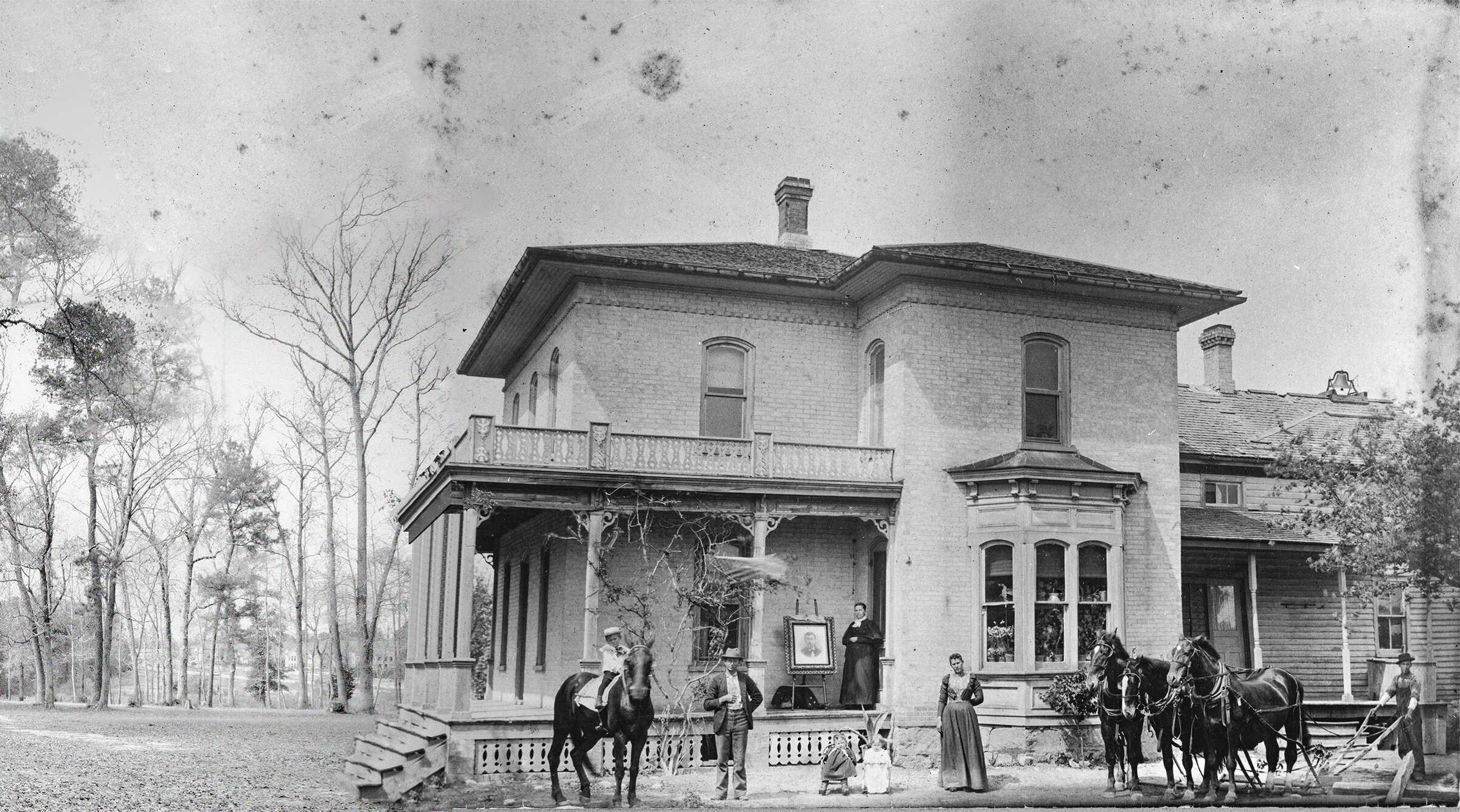
The History of The Fox Briar
The Hall Family
The story of The Fox Briar really begins in New Haven County, Connecticut, about 70 years before the construction of the home in 1875.
Avery Hall, the descendant of Lyman Hall who signed the Declaration of Independence, married Lucy Bacon around 1805. A year later the couple gave birth to Erastus Hall, their first of thirteen children, and eventual father of Hobart Hallum Hall who built The Fox Briar.
It was in Connecticut where Erastus met his wife Sophia Cowles. The couple migrated west to Grand Rapids, Michigan and gave birth to their first child, Hobart Hallum. Sadly, one year after the birth of their sixth child, Sophia Cowles Hall passed away, leaving behind Erastus to raise their children.
In May of 1850, Grand Rapids held their first election. Erastus Hall was elected the first city treasurer and later became the first sexton of St. Mark’s Episcopal Church. Around this time Erastus and his six children lived at the intersection of Madison, Cass, and Hall Street (named after the Hall family, and exists to this day).
Building The Fox Briar
Hobart Hall, a shoemaker by trade, married Nancy Minerva Williams in Grand Rapids. The couple lived with Erastus until 1875, when they purchased over 200 acres south of Jamestown, Michigan and built their farm (The Fox Briar).
The original owners of The Fox Briar: Hobart Hallum Hall and Nancy Minerva Williams Hall
The original home was a wooden, one bedroom structure, built from the maple and pine trees growing on the property. This particular room was eventually rebuilt in the 1970’s by the second owners. The present-day kitchen sits roughly on the original footprint.
Around 1885 the brick addition to the home was completed. During that period, many Western Michigan homes were influenced by the burgeoning Dutch-American architectural movement, which boasted similarities to American Italianate design with brick manufactured exclusively from Veneklasen Brick Company. Unique to the Veneklasen style was the brick color, most commonly red and orange, and less common the white brick used at The Fox Briar. If you look closely, you will find Hobart Hall’s initials inscribed on the front of the home.
To this day, around 300 homes built with Veneklasen brick still exist. In 2005, Dr. Michael J. Douma, Assistant Research Professor at Georgetown University, released his book “Veneklasen Brick,” which identifies the locations of all remaining Veneklasen brick homes. The Fox Briar was actually missed in his original survey in 2004, but more than a decade later Dr. Douma published the article, “Reading a Veneklasen Photograph,” dedicated to The Fox Briar.
Hobart Hallum Hall’s initials inscribed on a Veneklasen brick located at the front of the home.
Restoration of The Fox Briar
After nearly 150 years, much of The Fox Briar remains original. While the kitchen was rebuilt in the 1970s, and rehabbed again in 2018, the original floorboards remain intact, making the tiger maple flooring the oldest remnants of the home dating back to 1875. The dining room and living floors date back to the early 1880’s, as well as all of the untouched molding and hardware. The home’s field stone foundation, wooden frame, and wood molding were all harvested from the property.
In 2018, a straight staircase was built directly over the original for safety and aesthetic reasons. The original staircase can still be seen from the first floor bathroom.
Around 1910 a coal burning furnace was added to the home. Known as the heart of the home, the heater from Holland Furnace Company resided in the basement until roughly the 1950’s. The furnace now rests on the main floor of the barn.
Also located in the barn is an upright piano which belonged to Pauline Hall Gitchel, daughter of Hobart and Nancy. The piano originally lived in the living room before being relocated to the barn in the 1970’s.
The barn itself has had an interesting life. In the basement you’ll find remnants of the old milking room. In the mid-1900’s the barn was repurposed to house chickens. In the last 40 years, the previous owner built furniture out of the barn for Herman Miller, the designer of the Eames Lounge Chair.
Renovated barn attic built as an office and furniture showroom.
How The Fox Briar Got Its Name
No records indicate the home ever receiving a name from the original owners. So, when I bought the property in 2016, I decided that a name was in order.
The name The Fox Briar has two inspirations. First, my last name, Voskuil, is Dutch for “fox-hole.” Second, in the southeast corner of the property is a thorny briar patch of edible wild black raspberries; also the location of two Red fox sightings…hence “The Fox Briar”.


